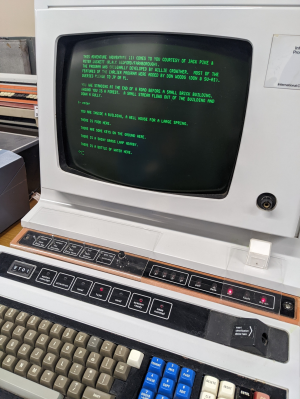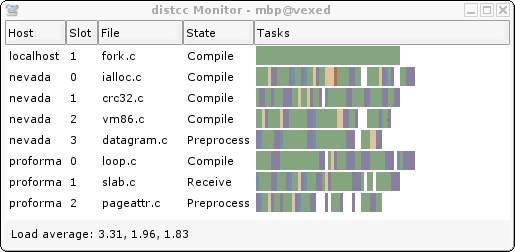I found myself in Milton Keynes, UK, a little while ago, with a few hours to spare. What could I do but rock over to the National Museum of Computing and make a nuisance of myself? I have visited many times, but this time, I was armed with a voice recorder and a mission to talk to everybody who didn’t run away fast enough. There is so much to see and do, that what follows is a somewhat truncated whistle-stop tour to give you, the dear readers, a flavour of what other exhibits you can find once you’ve taken in the usual sights of the Colossus and the other famous early machines.

We expect you’ve heard of the classic text adventure game Zork. Well before that, there was the ingeniously titled “Adventure”, which is reported to be the first ‘interactive fiction’ text adventure game. Created initially by [Will Crowther], who at the time was a keen cave explorer and D & D player, and also the guy responsible for the firmware of the original Arpanet routers, the game contains details of the cave systems of Mammoth and Flint Ridge in Kentucky.
The first version was a text-based simulation of moving around the cave system, and after a while of its release onto the fledgling internet, it was picked up and extended by [Don Woods], and the rest is history. If you want to read more, the excellent site by [Rick Adams] is a great resource that lets you play along in your browser. Just watch out for the dwarfs. (Editor’s note: “plugh“.) During my visit, I believe the software was running on the room-sized ICL2966 via a VT01 terminal, but feel free to correct me, as I can’t find any information to the contrary.
A little further around the same room as the ICL system, there is a real rarity: a Marconi TAC or Transistorised Automatic Computer. This four-cabinet minicomputer was designed in the late 1950s as a ‘fast real-time computer’, is one of only five made, and this example was initially installed at Wylfa nuclear power station in Anglesey, intended as a monitoring and alarm system controller. These two machines were spare units for the three built for the Swedish air defence system, which were no longer required. Commissioned in 1968, this TAC ran continuously until 2004, which could make it one the longest continuously running computers in the world. The TAC has 4 kwords of 20-bit core memory, a paper tape reader for program loading and a magnetic drum storage memory. Unusually, for this period, the TAC has a micro-coded CISC architecture, utilising a whole cabinet worth of diode-matrix ROM boards to code the instruction set. This enabled the TAC to have a customizable instruction set. As standard, the TAC shipped with trigonometric and other transcendental functions as individual instructions. This strategy minimized the program size and allowed more complex programs to fit in the memory.
Continue reading “Walking And Talking Through The UK National Museum Of Computing”

















